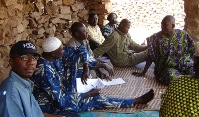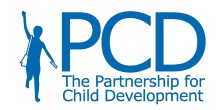Resource Bank  News
News  Assessing the best markets for Malian farmers
Assessing the best markets for Malian farmers
 News
News  Assessing the best markets for Malian farmers
Assessing the best markets for Malian farmers
 As part of an ongoing assessment of Mali’s Home Grown School Feeding programme, Imperial College London’s Partnership for Child Development and Mali’s Ministry of Agriculture are looking into how 52 rural cereal markets in Mali's Mopti and Kayes regions function and what their implications are on smallholder farmers and households.
As part of an ongoing assessment of Mali’s Home Grown School Feeding programme, Imperial College London’s Partnership for Child Development and Mali’s Ministry of Agriculture are looking into how 52 rural cereal markets in Mali's Mopti and Kayes regions function and what their implications are on smallholder farmers and households. Using the study's data, recommendations can inform key policies to build the capacity of smallholder farmers, mainly concerning what are the best markets they can sell to, and what school feeding markets provide the best opportunities for them.
What's being measured?
Specifically, the objectives of the study observe:
• Trends in market prices
• Prices volatility (including farmers, consumers and retail prices)
• How the political crisis of 2012 impacted on food prices and farmers’ welfare
In addition to the objectives mentioned above, during two field monitoring visits, other observations, such as market size, the availability of products, seasonal habits, post-harvest activities such as handling and storage, and farmers’ bargaining power against traders were also collected.
The ongoing impact evaluation of which the market study is a part of, has three main variables: education, health and nutrition, and agriculture as well as the effects of Mali’s 2012/2013 political and security crises.



